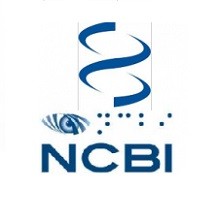
مرور هورمون های تیروئیدی و تکوین سیستم عصبی جنین
چکیده
تکامل عملکرد غده تیروئید جنین به جنینزایی، تمایز و بلوغ غده تیروئید وابسته است. این عمل با تکوین محور تیروئید- هیپوتالاموس. هیپوفیز و متابولیسم هورمون تیروئید همراه است و در نتیجه موجب تولید، ترشح و فعالیت هورمون تیروئید میشود. در طول دوران بارداری، ذخیره ثابتی از تیروکسین مادری (T4) وجود دارد که در گردش خون جنینی تا حدودا 4 هفته بعد از لانهگزینی جنین مشاهد میشود. این ذخیره برای عصبزایی اولیه و طبیعی جنین ضروری است. غلظتهای تري يدوتيرونين در طول بارداری به دلیل سوختو ساز بدن توسط دی یدیناز نوع 3 جفتی و جنینی بسیار پایین باقی میماند. غلظتهای T4 برای حفظ غلظتهای پایین به شدت تنظیم شدهاند و برای حفاظت از جنین و رسیدن به نقاط عصبی مهم مانند قشر مغز در مراحل خاص رشد و نمو بسیار ضروری هستند. ناقلهای غشائی فراوانی برای هورمونهای تیروئیدی شناخته شده در مغز جنین وجود دارند که نقش بسیار مهمی را در تنظیم غلظتهای تیروئیدی در ساختارهای مهم ایفا میکنند. این انتقالدهندهها همچنین مسیری را برای برهمکنش هورمون تیروئیدی درون سلولی با گیرندههای خود که موجب فعال شدن آنها میشوند؛ فراهم میکنند. میزان رو به افزایشی از شواهد تجربی در موشها و انسانها وجود دارد و نشان میدهند که حتی هیپوتیروکسینمی مادری خفیف هم ممکن است منجر به ناهنجاریهایی در تکامل سیستم عصبی جنین شود. مقاله مروری ما بر روی تکامل (انتوژنی) هورمون تیروئیدی در طول تکامل جنین، با تاکید بر ناقلهای غشائی و عمل TR در مغز، متمرکز خواهد شد.
مقدمه
در حالی که از صدها سال پیش اختلال رشد ذهنی و جسمی ساکنان کوههای آلپ با کمبود ید به عنوان کرتنیسم (عقب ماندگی توام با کوتولگی) شناخته شده بود؛ ارتباط بین کمبود ید، کمکاری تیروئید و تکوین ناقص سیستم عصبی بسیار دیرتر تشخیص داده شد (Cranefield 1962, Morreale de Escobar et al 2004). هورمونهای تیروئیدی (تیروکسین (T4) و تیریدوتیرونین (T3)) برای پیشرفت و حفظ فرآیندهای فیزیولوژیکی طبیعی به خصوص فرآیندهای سیستم عصبی مرکزی که در آنها هورمونهای تیروئیدی در طول دوران بارداری به رشد و تکامل مغز کمک میکنند؛ ضروری هستند (Joffe & Sokolov 1994, Neale et al. 2007). هورمونهای تیروئیدی در درجه اول ژنهای درگیر در میلینسازی و تمایز سلول عصبی/ گلیال را تنظیم میکنند (Bernal 2005). انتقال هورمونهای تیروئیدی به مغز جنین یک فرآیند پیچیده است که در زمانهای مختلف به بیان گیرندههای هورمونهای تیروئیدی در مغز (TRs)، هورمون تیروئیدی مادر- جنین و ناقل یدید، یک سیستم پیچیده از فیدبک اندوکرین (محور هیپوتالاموس- هیپوفیز- تیروئید (HPT) و متابولیسم هورمون تیروئید توسط کبد و آنزیمهای دی یدیناز مغز (دی یدیناز نوع 2 (D2) و دی یدیناز نوع 3 (D3)) نیاز دارد تا از سطح ثابت هورمونها اطمینان حاصل شود (Zoeller et al. 2007).
Abstract
The development of fetal thyroid function is dependent on the embryogenesis, differentiation, and maturation of the thyroid gland. This is coupled with evolution of the hypothalamic–pituitary–thyroid axis and thyroid hormone metabolism, resulting in the regulation of thyroid hormone action, production, and secretion. Throughout gestation there is a steady supply of maternal thyroxine (T4) which has been observed in embryonic circulation as early as 4 weeks post-implantation. This is essential for normal early fetal neurogenesis. Triiodothyronine concentrations remain very low during gestation due to metabolism via placental and fetal deiodinase type 3. T4 concentrations are highly regulated to maintain low concentrations, essential for protecting the fetus and reaching key neurological sites such as the cerebral cortex at specific developmental stages. There are many known cell membrane thyroid hormone transporters in fetal brain that play an essential role in regulating thyroid hormone concentrations in key structures. They also provide the route for intracellular thyroid hormone interaction with associated thyroid hormone receptors, which activate their action. There is a growing body of experimental evidence from rats and humans to suggest that even mild maternal hypothyroxinemia may lead to abnormalities in fetal neurological development. Our review will focus on the ontogeny of thyroid hormone in fetal development, with a focus on cell membrane transporters and TR action in the brain.
Introduction
While the impaired mental and physical development of inhabitants of the iodine-deficient Alps was recognized as cretinism hundreds of years ago, the link between iodine deficiency, hypothyroidism, and impaired neurologic development was made very much later (Cranefield 1962, Morreale de Escobar et al. 2004). Thyroid hormones (thyroxine (T4) and triiodothyronine (T3)) are essential for the development and maintenance of normal physiological processes, especially those of the central nervous system, where thyroid hormones assist in brain maturation throughout gestation (Joffe & Sokolov 1994, Neale et al. 2007). Thyroid hormones primarily regulate genes involved in myelination and neuronal\glial cell differentiation (Bernal 2005). Delivery of thyroid hormones to the fetal brain is a complex process requiring, at different times, expression of brain thyroid hormone receptors (TRs), materno-fetal thyroid hormone and iodide transport, an intricate system of endocrine feedback (the hypothalamic–pituitary–thyroid (HPT) axis and thyroid hormone metabolism by liver and brain deiodinase enzymes (deiodinase type 2 (D2) and deiodinase type 3 (D3)) to ensure basal levels are sustained (Zoeller et al. 2007)).
چکیده
مقدمه
انتوژنی عملکرد هورمون تیروئیدی در طول تکامل جنین
دی یدیناسیون هورمونهای تیروئیدی
ناقلهای هورمون تیروئید در مغز
ژنهای TR و عملکرد آنها
نتیجهگیری
Abstract
Introduction
Ontogenesis of thyroid hormone action in fetal development
Deiodination of thyroid hormones
Thyroid hormone transporters in the brain
TR genes and activity
Conclusion
- ترجمه فارسی مقاله با فرمت ورد (word) با قابلیت ویرایش، بدون آرم سایت ای ترجمه
- ترجمه فارسی مقاله با فرمت pdf، بدون آرم سایت ای ترجمه
